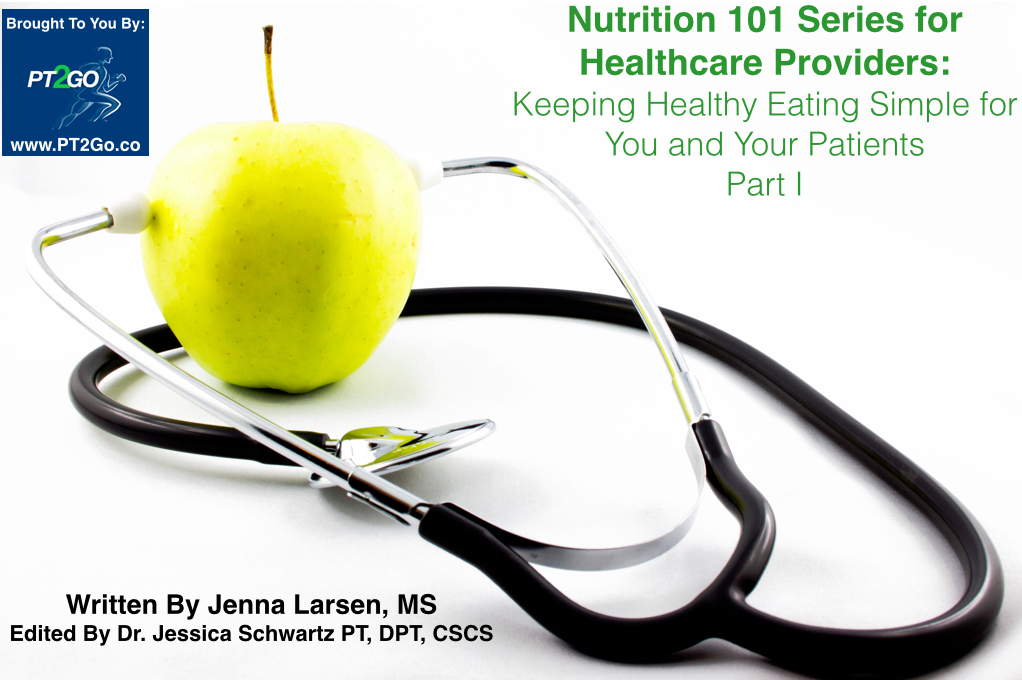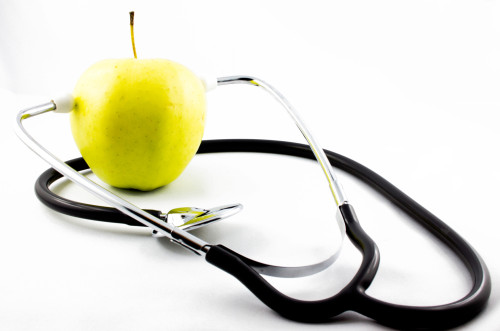Nutrition 101 Series for Healthcare Providers:
Keeping Healthy Eating Simple for You and Your Patients Part I
Written By Ms. Jenna Larsen, M.S.
Edited By Dr. Jessica B. Schwartz PT, DPT, CSCS
“Eat food, not too much, mostly plants.” – Michael Pollan
In the United States, a society that can be overly satiated with consumer information, we’ve made healthy eating complicated.
As a nutrition education professional working in the public health sector in New York City, I’ve learned that the most effective methods for delivering nutrition education to the community is to shift language away from weight loss and highlight the benefits of healthy eating.
Goals need to be clearly delineated with the limited amount of time providers have with patients. When speaking with patients, gently introducing nutritional concepts in a digestible format can make healthy eating fun and accessible.
I challenge you to move away from directly discussing weight loss and facilitate open ended conversation.
This shouldn’t take more than 3 minutes of an office visit. Keeping time constraints in mind, you should be able to quickly assess if your patient is eating primarily a whole food, fast food, or processed food diet.
This is a great segway to engage mutual conversation and ask your patient what their barriers are to healthy eating? (time, cost, lack of cooking skills, education) and gently facilitate the thought process of how eating healthy can benefit their life.
I’ve found that high yield language delivery can be as simple as educating communities with the following points*.
1. Choose more whole foods. A whole food has NOTHING added and NOTHING taken away from how it was found in nature.
2. To determine if a food is more whole, focus on the ingredients list instead of specific nutrients on a label. Choose foods that have the fewest ingredients. This removes confusion associated with marketing and labeling language found in supermarkets. Better yet- choose foods without a label (i.e. fruits and vegetables).
3. View food choices on a spectrum – the most whole foods on one end and the most processed on the other- rather than focusing on whether a food is ‘good’ or ‘bad’. Starting with short-term achievable goals, will be easier and more realistic for patients to turn healthy eating into a habit.
4. Taste buds will change and you’ll learn to like fruits and vegetables. Help patients understand that they will truly enjoy the experience of eating healthy, although perhaps not right away. They will feel more energized as they incorporate more whole foods into their diet.
Have patients set one goal for themselves to address at the follow up**. This will range depending on the patient, but it should be something they view as feasible. Encourage them to keep a journal.
Journal ideas include:
1. Try three new fruits or vegetables you don’t normally eat.
2. Drink fewer sugary drinks and more water. Carrying a water bottle will help.
3. Replace at least one snack with a fruit or vegetable each day.
4. Cook at home at least twice per week. Encourage friends and family- including children- to cook with you.
5. Make a salad for lunch at least one day per week.
It is important provide easily accessible and reliable resources to help patients address barriers.
If you work with low-income families, encourage them to check eligibility for SNAP (Supplemental Nutrition Assistance Program), or food stamps, and provide them an avenue for signing up.
Just Say Yes to Fruits and Vegetables (JSY) ***, a USDA-funded program, features valuable money-saving tips that can provide excellent talking points in a discussion where cost barriers are almost certain to surface. Over 200 fruits and vegetable recipes are the highlight of the website and are featured in both English and Spanish. All recipes are simple with few ingredients, low-cost, and easy to prepare. They also offer valuable storage and preparation tips. Print some to offer as a resource. Make a few recipes yourself to provide a personal recommendation.
If you are be excited about healthy eating, your patients will be too!
Until next time,
Jenna
*Please note that these messages may require tweaking for certain patient populations, such as those with involved medical problems.
** Follow-up at subsequent appointments throughout your provider-patient relationship is key. This will let your patients know you are connected to them
***Just Say Yes to Fruits and Vegetables (JSY) is one of New York State’s premiere nutrition education services available to low income families. JSY is a nutrition education initiative designed to prevent overweight/obesity and reduce long term chronic disease risks through the promotion of increased fruit and vegetable consumption.


